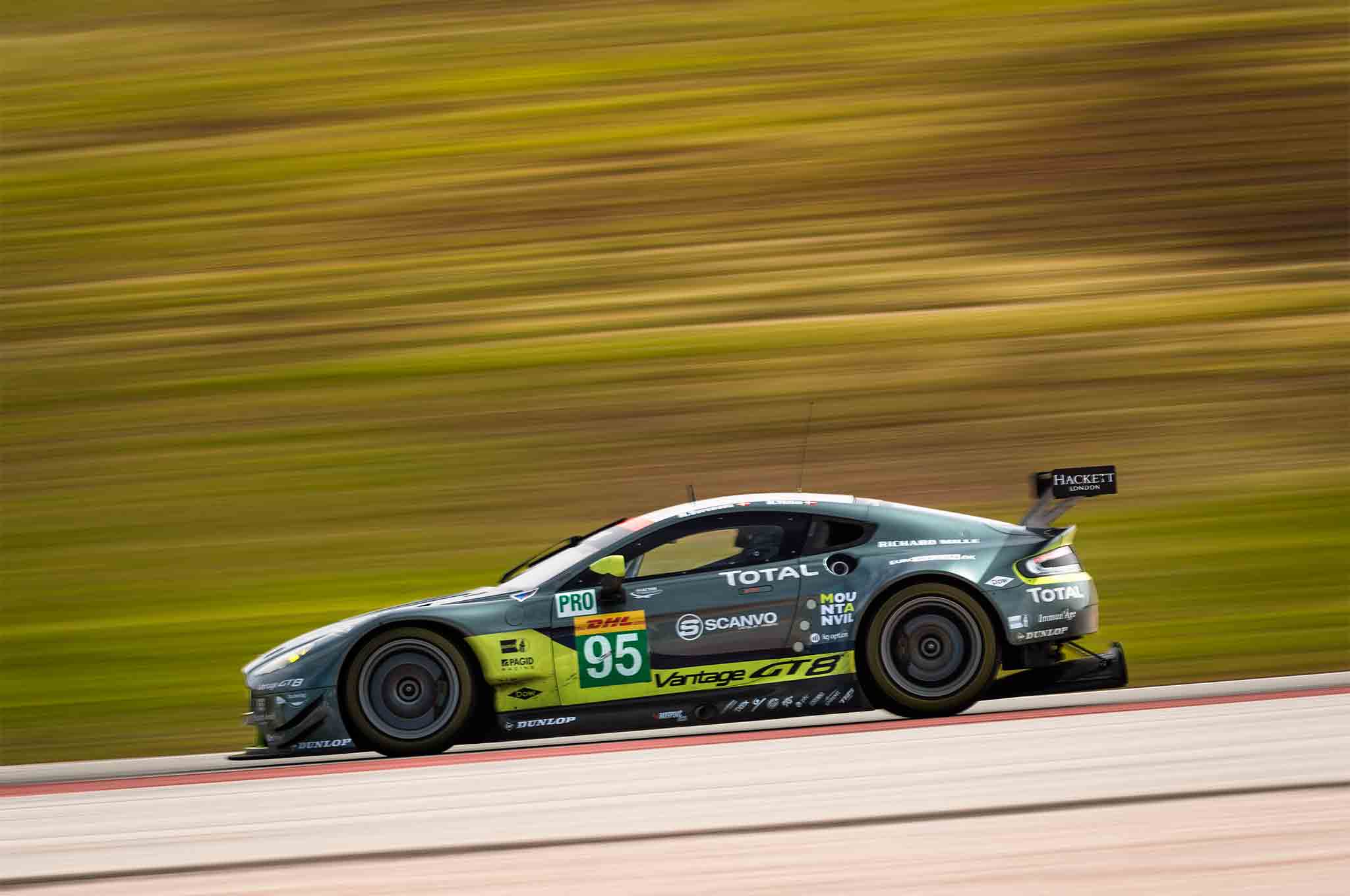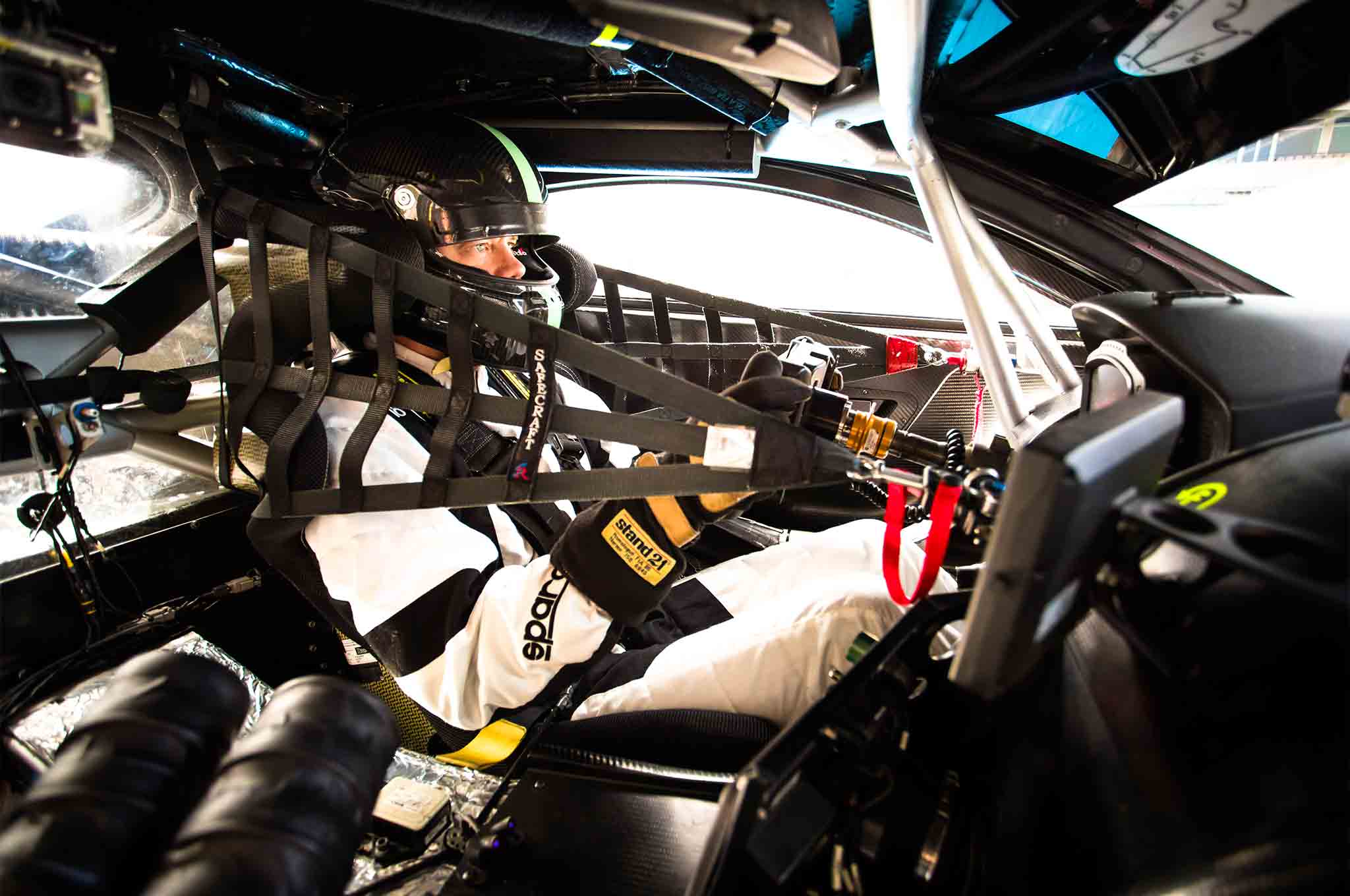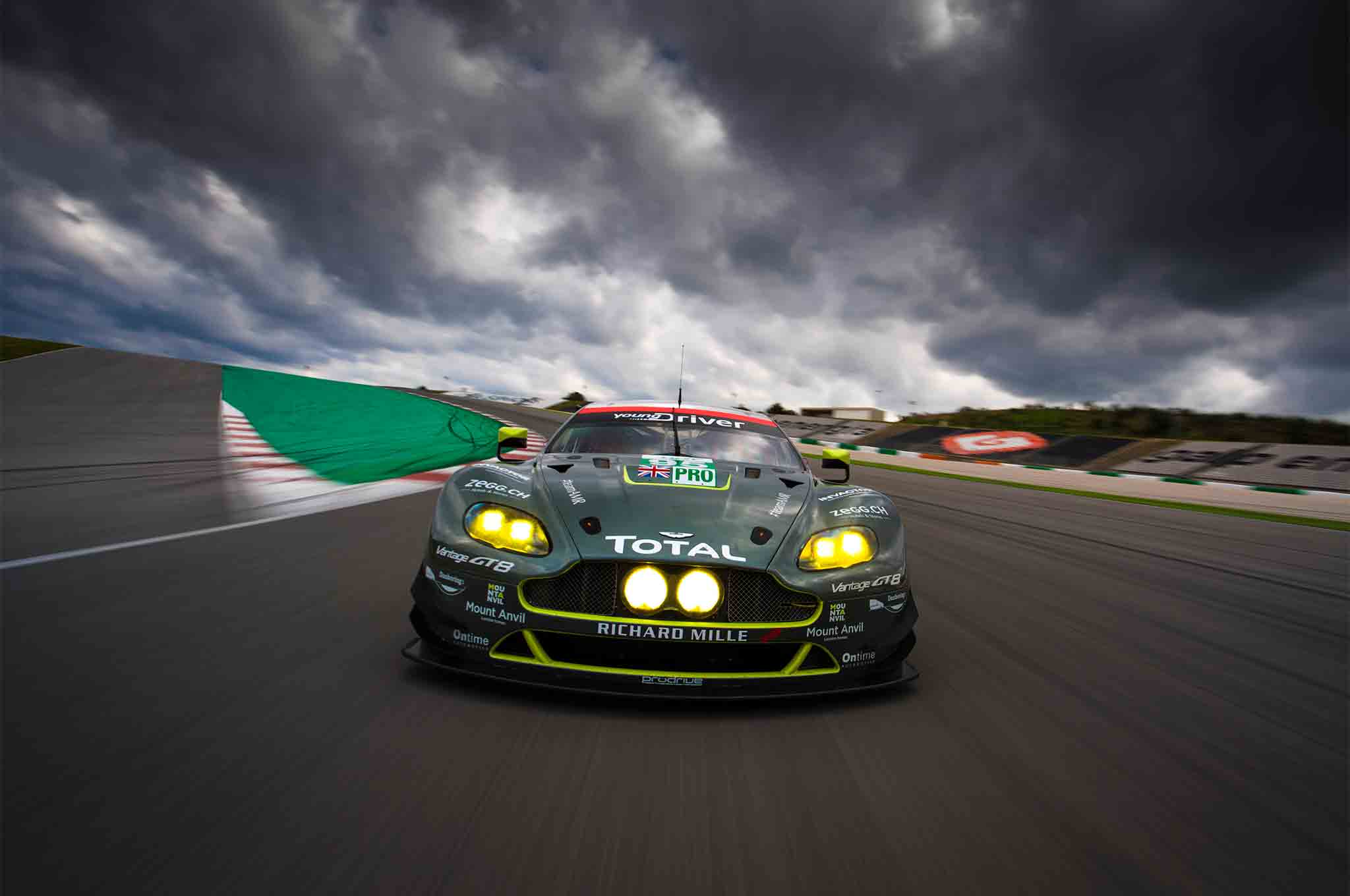We all need a reality check once in a while. In early 2015,
I had a go in a top-spec Subaru rally car and the ultra-crazy, Formula 1-inspired Lotus T125 track car. Connecting with
each was difficult despite extensive familiarity with many purpose-built race
cars over the years, and I walked away with my tail slightly between my legs.
When Aston Martin Racing (AMR) invited me to drive its FIA World Endurance
Challenge-spec V8 Vantage GTE factory race car in Portugal, I was honored and
thrilled, but a touch apprehensive.
Inspecting the front-engine Aston in the garage at Algarve
(Portimao) International Circuit doesn’t oust the butterflies. We’re talking
prototype-levels of engineering and detailing. The aerodynamic additions are
extensive, particularly the giant, new-for-2016 carbon-fiber rear diffuser.
Surveying the cabin continues my awe. First, there’s the
extremely aft seating position. Also, filling the would-be passenger area are
an array of computers and mil-spec wiring. Yes, the competition car resembles
the road-going V8 Vantage, but only on the same level that I’m like Daniel
Craig simply because our birth certificates both state we’re male.

I find solace rewinding to what Dan Sayers, AMR technical
director, told me on the phone weeks earlier. “One thing we’ve always targeted
with the car is making it easy to drive,” he said. “You can get a tenth or two
[of a second] out of our pro drivers [with a more aggressive setup]. But if you
can get your amateur drivers to be comfortable in the car, you can make up bucket
loads of time — you can get seconds out of them.” Well then, let’s get on with
this.
Wait, hold that thought. I should probably first have a
gander at the new-to-me circuit. Two brief sighting laps in a right-hand drive V12 Vantage S simply inform me that the track is
rather challenging, with extensive elevation changes. Still not feeling
particularly confident, I steal an ultra-slow, three-cylinder Volkswagen Polo
rental car from Aston Martin PR for two further quick — well, rushed — laps.
The pedestrian hatchback isn’t quite as fast around Portimao as the V12-powered
Aston road car.
Speaking of 12-cylinder engines, the V8 Vantage GTE race car
doesn’t carry a powerplant with a dozen cylinders. Maybe the name gave it away?
The 4.5-liter V-8 is production-based but the internals are bespoke, allowing
the motor to develop roughly 550 horsepower in race trim and run in anger for
5,000 kilometers (3,100 miles) before needing a rebuild — very impressive for a
competition engine. Sayers tells me that removing the series-mandated air
restrictors would bump power by about 10 percent. He adds, “There’s no rpm
limit [in the rules] but we shift at around 7,500 rpm and redline is close to
8,000 rpm. We constantly evaluate whether we should switch to the V-12 [like
the lower-spec GT3 race car]. But in terms of efficiency, mass and packaging,
the V-8 makes for a better race engine.”
That race-spec V-8 sounds amazing as factory AMR driver,
Marco Sørensen, warms-up the car. Sørensen knows the Aston well, as he and
co-driver, Nick Thiim, piloted No. 95 to both the teams’ and drivers’
championships in 2016. Oh, and this exact race car awaiting my far-less-experienced
butt also finished on the top step of the podium at the 24 Hours of Le Mans in
2014 and won that year’s FIA WEC championship, both in the LM GTE-Am category.
Sørensen returns the car to the pit box and the crew raises it with the
integral air jacks. My turn.

Climbing into the tight cockpit isn’t difficult by race car
standards but it’s by no means a spacious environment, especially with both
safety nets clipped into place. There’s a plethora of buttons on the
rectangular steering wheel and center console, but development engineer John
Ogden simply tells me not to mess with anything — just drive the car. No
problem there, John.
The AMR crew drops the car noisily onto the tarmac, I ignite
the engine, and I’m off. The clutch is surprisingly friendly and not needed
once underway. I disable the 37-mph pit-lane speed limiter and use the
steering-mounted paddles to shift the Xtrac six-speed sequential gearbox. I
immediately question the steering — why is it so light? The relaxed but
effective traction control keeps the wide Dunlop tires at the back axle roughly
in check but I’m forced to dial-in some opposite lock when my right foot is
overly eager in the low-speed corners. I feel like I’m perched inside a mailbox
as I gaze out the slit-like windshield. The limited visibility frustrates, not
helped by my huge lack of experience circulating the 2.9-mile collection of
corners and straights. Déjà vu sets in.
Luckily, the next two sessions extinguish any similarities
between this Aston and my arduous rally and F1-esque experiences two-years ago.
As I become more familiar, I recognize the V8 Vantage GTE’s cockpit as a very
intuitive and comfortable place to spend time. The burly V-8 makes strong but
not insane power. Remember, the Aston weighs more than 2,800 pounds, which
means many more powerful, top-spec supercars are quicker in a straight line.
But of course AMR’s GTE car is about a total racing package, not simply maximum
velocity. No standard supercar could come close to matching the Aston’s
swiftness around Portimao.

My early impressions regarding the steering amend as my pace
improves and I begin enjoying the aluminum chassis’ intrinsic balance. Adapting
to the brakes takes more time but they’re amazingly powerful. ABS is not
allowed in the GTE category and the large steel binders are unassisted. The
ultra-heavy pedal only provides effective feedback and modulation when treated
like a leg-press sled at the gym.
Then there’s the matter of the high-speed corners. They’re
clearly an area of this experience that separate the dreaming automotive
journalist from the pro racer. AMR’s managing director, John Gaw, gently
reminded me shortly before my drive that No. 95 was due to appear on the Geneva
motor show stand in early March and he’d prefer it displayed in one piece. A
logical request and another reminder to mind faster turns considering the
extreme downforce on offer and, therefore, quicker pace that’s possible by more
experienced race drivers.
Climbing out of the Aston, I feel good and hold my head
high. I didn’t embed the $810,000 factory race car into the Armco or burn it to
the ground, and my pace wasn’t embarrassing slow. Lap times continued to drop
and my level of comfort with both the car and the challenging Portuguese track
improved. That’s not how I felt when I walked away from the Lotus T125 or, to a
lesser degree, the Subaru rally car. Now I simply need more time in the Aston,
time that’s not available today.
An all-new AMR entry in the FIA WEC series — and possibly
the IMSA WeatherTech series in North America in the future — is likely for the
2018 season, due to the anticipated replacement for the 12-year old Vantage
road car. Maybe Aston will give me another go in their outgoing V8 Vantage GTE
at the end of the 2017 season — or the new race car?
source: http://www.automobilemag.com/news/drive-aston-martin-racing-v8-vantage-gte-race-car/
by Marc Noordeloos, The Manufacturer
http://www.boscheuropean.com
No comments:
Post a Comment